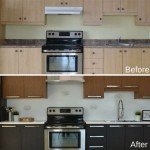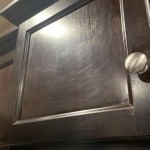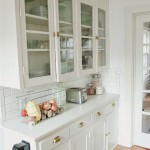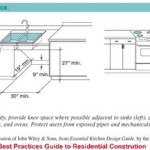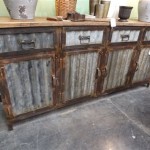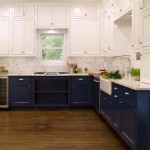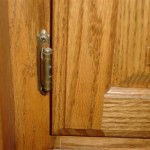Off-The-Shelf Kitchen Cabinets: An In-Depth Guide
Kitchen renovations represent a significant investment for homeowners. One of the most crucial aspects of any kitchen remodeling project is the selection of cabinets. While custom cabinetry offers unparalleled design flexibility, off-the-shelf kitchen cabinets provide a readily available and cost-effective alternative. Understanding the advantages, limitations, and selection process for off-the-shelf cabinets is essential for a successful kitchen renovation.
Off-the-shelf cabinets, also known as stock cabinets, are pre-manufactured in standard sizes and styles. They are not custom-built to specific kitchen dimensions or design preferences. Instead, they are mass-produced and readily available for purchase at home improvement stores, cabinet retailers, and online suppliers. This standardization allows for faster lead times and lower overall costs compared to custom options.
The availability of off-the-shelf cabinets makes them a popular choice for homeowners on a budget or those looking for a quick kitchen upgrade. However, it's critical to carefully consider the implications of choosing stock cabinets, ensuring they align with the desired aesthetic and functional requirements of the kitchen space.
This article will explore the intricacies of off-the-shelf kitchen cabinets, covering their benefits, limitations, selection process, installation considerations, and maintenance requirements. By understanding these aspects, homeowners can make informed decisions and achieve a satisfying and functional kitchen renovation.
Advantages of Off-The-Shelf Kitchen Cabinets
The popularity of off-the-shelf kitchen cabinets stems from a range of compelling advantages, making them a viable option for many homeowners. These advantages primarily revolve around cost savings, speed of acquisition, and relative ease of installation.
Cost-Effectiveness: The primary advantage of stock cabinets lies in their affordability. Due to mass production and standardized designs, manufacturers can offer them at significantly lower prices compared to custom-built options. This cost difference can be substantial, freeing up budget for other aspects of the kitchen renovation, such as countertops, appliances, or flooring.
The lower cost is achieved through economies of scale. Manufacturing processes are streamlined, materials are purchased in bulk, and labor costs are reduced by avoiding custom design and construction. This cost savings is directly passed on to the consumer, making off-the-shelf cabinets an attractive option for budget-conscious homeowners.
Speed of Acquisition: Another significant advantage is the rapid availability of stock cabinets. Unlike custom cabinets, which require weeks or even months for design and construction, off-the-shelf cabinets are typically readily available for immediate purchase or delivery. This speed is particularly beneficial for homeowners with tight deadlines or those seeking a quick kitchen makeover.
The availability advantage also extends to replacement parts. If a door, drawer, or other component is damaged, replacement parts are often easily obtainable from the retailer or manufacturer. This ease of replacement contrasts sharply with custom cabinets, where replicating a damaged part may require significant time and expense.
Ease of Installation: While professional installation is always recommended for optimal results, off-the-shelf cabinets are generally designed for relatively straightforward installation. The standardized sizes and designs facilitate the installation process, potentially reducing labor costs if the homeowner chooses to undertake the installation themselves, assuming they possess the necessary skills and tools.
Many manufacturers provide detailed installation instructions and support resources, further simplifying the installation process. The standardized construction also ensures that cabinets are easily aligned and leveled, contributing to a professional-looking finished result. This ease of installation contributes to the overall cost-effectiveness of off-the-shelf cabinets.
Variety of Styles and Finishes: While custom cabinets offer the ultimate in design flexibility, off-the-shelf cabinets are available in a surprisingly wide range of styles, finishes, and materials. Homeowners can choose from various door styles (e.g., shaker, raised panel, flat panel), wood species (e.g., oak, maple, birch), and finishes (e.g., paint, stain, laminate) to match their desired aesthetic. This variety allows for a degree of personalization without the expense of custom cabinetry.
The availability of different styles and finishes is constantly expanding as manufacturers strive to meet consumer demand. This means homeowners are less limited in their design choices than they might initially expect when considering stock cabinets. Regular updates to product lines ensure a selection that is both contemporary and timeless.
Limitations of Off-The-Shelf Kitchen Cabinets
Despite their advantages, off-the-shelf kitchen cabinets also have certain limitations that homeowners must consider. These limitations primarily relate to size constraints, design limitations, and potential material quality concerns.
Size Constraints: The primary limitation of stock cabinets is their availability in standard sizes. Kitchens with unusual dimensions or layouts may present challenges when using off-the-shelf cabinets. Gaps or awkward spaces may result if the standard sizes do not perfectly fit the available space. This can necessitate the use of fillers or modifications, potentially increasing the overall cost and complexity of the project.
The standard sizes typically range in increments of 3 inches, limiting the precision with which the cabinets can be fitted to the kitchen. This limitation can be particularly problematic in older homes with irregular walls or uneven floors. Careful planning and potentially creative solutions are required to overcome these size constraints.
Design Limitations: While a variety of styles and finishes are available, off-the-shelf cabinets lack the design flexibility of custom cabinetry. Homeowners may be limited in their choice of door styles, hardware options, and interior configurations. Specific design features, such as custom moldings or specialized storage solutions, may not be available with stock cabinets.
The limitations in design also extend to the overall layout of the kitchen. Unique or unconventional layouts may be difficult to achieve with standard cabinet sizes. This can restrict the homeowner's creativity and limit their ability to create a truly personalized kitchen space. Careful consideration of the kitchen's layout is crucial when deciding whether off-the-shelf cabinets are a suitable option.
Potential Material Quality Concerns: While not all off-the-shelf cabinets are of inferior quality, some manufacturers prioritize cost savings over material durability. Cabinets constructed from lower-grade materials, such as particleboard or thin veneers, may be less durable and prone to damage. It is essential to carefully inspect the construction and materials of stock cabinets before purchasing them.
Examining the cabinet boxes, door hinges, and drawer slides is crucial for assessing the overall quality. Look for solid wood construction, sturdy hardware, and durable finishes. While lower-priced options may be tempting, investing in higher-quality off-the-shelf cabinets can ensure longevity and avoid costly repairs or replacements in the future.
Limited Customization: While certain modifications, such as adding fillers or adjusting trim, are possible with off-the-shelf cabinets, substantial customization is generally not feasible. Homeowners seeking highly personalized features or unique storage solutions will likely find custom cabinetry to be a more suitable option. The lack of customization can be a drawback for those with specific functional or aesthetic requirements.
The limited customization also extends to the internal configuration of the cabinets. Modifying shelf placement or adding specialized inserts can be challenging or impossible with stock cabinets. This can be a significant drawback for homeowners with specific storage needs or those seeking to maximize the use of space within the cabinets.
Selecting and Installing Off-The-Shelf Kitchen Cabinets
The process of selecting and installing off-the-shelf kitchen cabinets requires careful planning and attention to detail. From accurate measurements to proper installation techniques, several factors contribute to a successful outcome.
Accurate Measurements: The first step in selecting off-the-shelf cabinets is to take precise measurements of the kitchen space. This includes measuring the wall lengths, height of the ceiling, and location of windows, doors, and plumbing fixtures. Accurate measurements are crucial for determining the number and sizes of cabinets required.
It is recommended to create a detailed kitchen layout plan, indicating the placement of each cabinet and appliance. This plan will help visualize the finished kitchen and ensure that the chosen cabinets fit properly. It is important to account for any obstructions, such as pipes or electrical outlets, and adjust the layout accordingly.
Choosing the Right Style and Finish: With measurements in hand, the next step is to select a cabinet style and finish that complements the overall kitchen design. Consider the existing architectural style of the home and choose cabinets that align with that aesthetic. Explore different door styles, wood species, and finishes to find the perfect combination.
Consider the durability and maintenance requirements of different finishes. Painted cabinets may require more frequent cleaning than stained cabinets, while laminate finishes are generally more resistant to scratches and stains. Choose a finish that is both aesthetically pleasing and practical for the homeowner's lifestyle.
Professional Installation vs. DIY: While off-the-shelf cabinets are designed for relatively straightforward installation, professional installation is highly recommended for optimal results. Professional installers have the experience, tools, and expertise to ensure that the cabinets are properly aligned, leveled, and secured.
If the homeowner chooses to undertake the installation themselves, it is essential to carefully follow the manufacturer's instructions and take all necessary safety precautions. Proper preparation, including leveling the floor and marking the stud locations, is crucial for a successful DIY installation. However, it's important to recognize that improper installation can void warranties and lead to future problems.
Planning for Fillers and Modifications: Given the limitations of standard cabinet sizes, it may be necessary to use fillers or make minor modifications to achieve a seamless fit. Fillers are typically used to fill gaps between cabinets and walls or appliances. They can be purchased in matching colors and finishes to blend seamlessly with the cabinets.
Modifications, such as trimming cabinet bases or adjusting door hinges, may also be required to accommodate specific kitchen features. It is important to carefully plan for these modifications in advance and ensure that the necessary tools and materials are available.
Inspecting Cabinets Upon Delivery: Upon delivery of the cabinets, it is crucial to thoroughly inspect them for any damage or defects. Check for scratches, dents, or other imperfections. Verify that all the necessary hardware and components are included.
If any damage or defects are discovered, immediately contact the retailer or manufacturer to arrange for replacements or repairs. Do not attempt to install damaged cabinets, as this may void the warranty.
Securing Cabinets to the Wall: Properly securing the cabinets to the wall is essential for safety and stability. Use appropriate screws and anchors to attach the cabinets to the wall studs. Ensure that the cabinets are level and plumb before tightening the screws.
For upper cabinets, it may be necessary to install a support rail to provide additional stability. Follow the manufacturer's instructions for securing the cabinets to the wall.
:strip_icc()/PAinteriors-49-d779437503e24af59818b838df25d875.jpeg?strip=all)
20 Open Kitchen Cabinet Ideas That Embrace The Trend

Do You Have A Maid And Other Q S About Open Shelving The Inspired Room

House Home Open Shelves Or Closed Upper Cabinets The Debate Is On
What Makes Bespoke Kitchens Diffe From Off The Shelf Wood Works

20 Ideas For Using Wasted Space On The Ends Of Kitchen Cabinets

22 Beautiful Open Shelving Ideas To Transform Your Kitchen

Like The Open Shelves At End Of Cabinets Corner Kitchen Cabinet Wall

22 Best Open Kitchen Shelving Ideas And Decor

Custom Vs Prefabricated Comparing Bespoke Cabinets To Off The Shelf Options Impressions Kitchens

What S Behind The Kitchen Cabinets Hdr Remodeling
Related Posts

